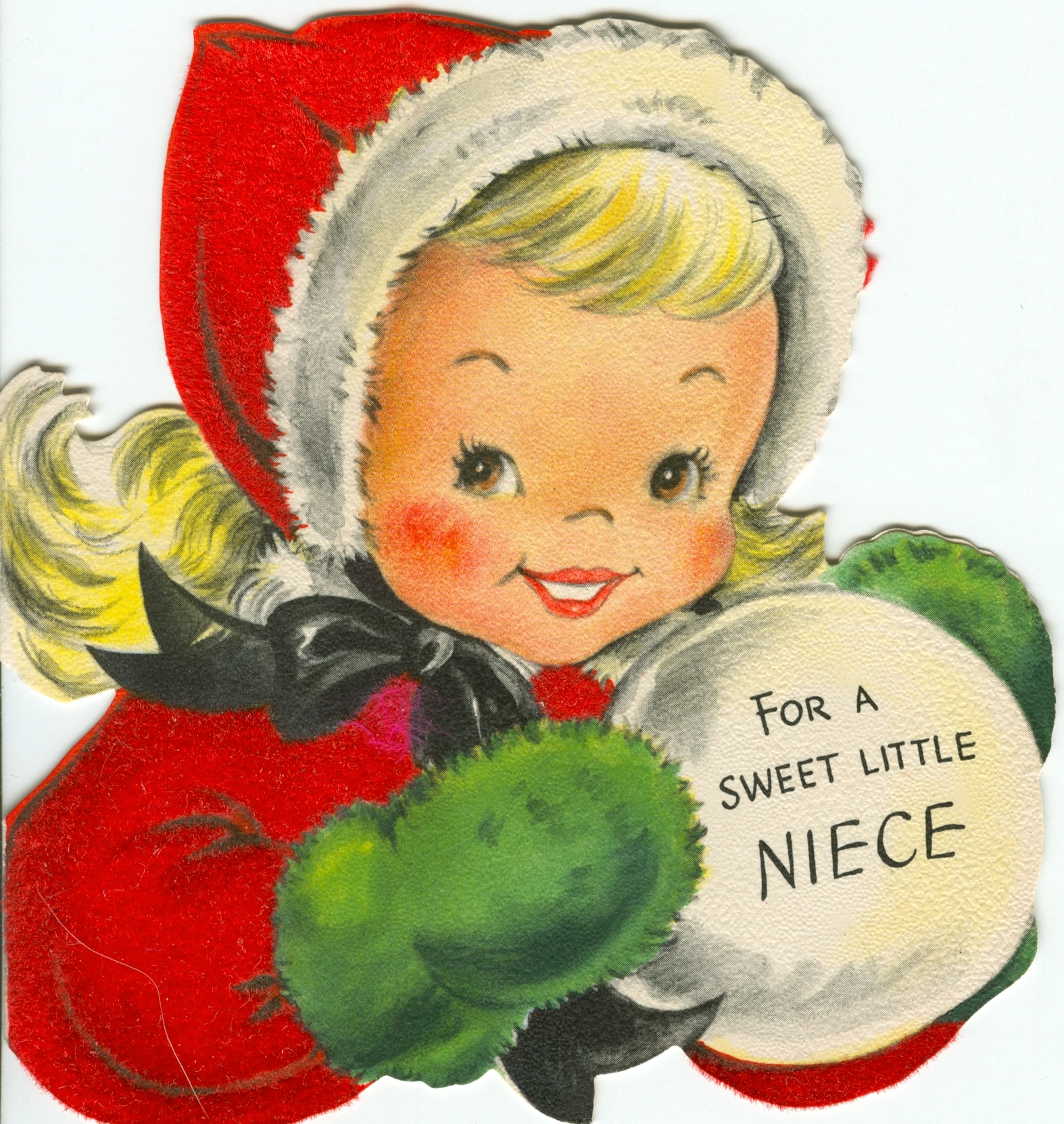A Child's World: Childhood in 19th Century New England
A Child’s World: Childhood in 19th Century New England
New Exhibit at Old Sturbridge Village, Sturbridge, MA Opens October 13

Joseph Willmore
Birmingham England.
In an age before super-sized toy stores, pampered children, and helicopter parents, a new concept of a child’s formative years began to emerge in 19th-century New England. There was an increasing awareness that “childhood” was an important time, separate from infancy, yet distinctly different from young adulthood and maturity.
Old Sturbridge Village historians will explore the changing world of children in the early 1800s in a new exhibit, A Child’s World: Childhood in 19th-Century New England on display October 13 through Memorial Day, May 27, 2013. For the first time, nearly 150 rare children’s toys, games, puzzles, portraits, clothing, and furniture from the museum’s collection will be on display together.
“We have spent a full year selecting the very best child-related artifacts from our collection of more than 60,000 items to portray the life of a child in the early 19th-century,” notes Rebecca Beall, collections manager at Old Sturbridge Village. “Many of these antiques have not been on public display for more than 20 years.”
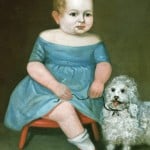
Highlights of the “Child’s World” exhibit include antique dolls, dollhouse, cradles, toy soldiers, children’s wagons, wheelbarrows, sleds, miniature chests, chairs, rocking horses, building blocks, and board games. A wide selection of children’s clothing fashions are also part of the exhibit, including dainty dresses and a rare boy’s 1820 “Skeleton Suit” – a close-fitting, high-waisted outfit often seen in paintings of the era.
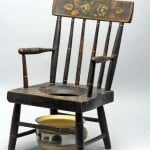
According to Old Sturbridge Village historians, most rural New England children had far fewer toys than a modern child. Most, if not all, of these toys would have been homemade – carved animals, board games scratched into a scrap of wood, roughly carved toy houses, and “rag baby” dolls made from bits of left over fabric.
“Today, children are bombarded with bright plastic toys with bells, whistles, sirens and flashing lights. Children of the 19th century had much simpler toys,” Beall says. “A store-bought toy would have been a treasured plaything for most rural New England children.”
Social games and amusements were also popular among 19th-century children. Board games, which had been available imported from England and Europe, were now beginning to be published in the United States. Some companies, like Milton Bradley in nearby Springfield, Massachusetts, are still in operation today. The Old Sturbridge Village exhibit includes one of Milton Bradley’s very first games, “The Checkered Game of Life,” published in 1860. This game proved to be enormously popular, selling tens of thousands in the first year. “The Game of Life” (albeit a modern version) is still popular with families today.
In researching “A Child’s World,” OSV historians found both similarities and differences between children’s lives then and now. Like modern children, those of the 19th-century played with dolls and animals, were expected to help with household work, went to school, and looked forward to the time when they would be considered “grown up.”
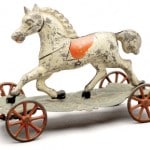
Probably Germany
Belonged to a Weston, Massachusetts family.
Families were larger in early New England – with five to six children the average and families of nine or ten children not unusual. New England couples typically married in their early to mid-20s, and might expect to have a pregnancy approximately every two years over a long span of time. Children in 19th-century families often ranged in age from infants to young adults.
With no ultrasounds and no prenatal or postnatal care, infant mortality in the 1800s was high and mothers also faced serious complications during pregnancy, childbirth and recovery that could prove fatal. As a consequence, the months before a child’s birth were a time of excitement and anticipation as well as uncertainty and anxiety.
Then, as now, special equipment was needed to care for babies and keep them safe in the home. Nineteenth-century highchairs, “potty chairs,” chamber pots, and child tenders (a precursor to the playpen) demonstrate that there were some specialized “gear” designed then for babies and toddlers, but it was nothing like the variety of sophisticated equipment available to families today.
Running a rural 19th-century household was a lot of work, and children were expected to do their share. Young girls and boys were expected to help around the house – cleaning, doing kitchen chores, and tending the household garden. Tasks typically handled by children in early New England included gathering eggs and firewood, hauling water, weeding the garden, gathering berries, picking apples, mucking out stalls, and emptying chamber pots.

1858, Oil on canvas. Attributed to Erastus Salisbury Field (1805-1900), Palmer, Massachusetts.
Girls and boys were taught to sew and knit, which was a good way for children to develop their fine motor skills. In the kitchen, children would help out by churning butter, pounding sugar, sifting flour, and stoning raisins (removing the seeds).
Boys as young as 9 or 10 were taught to “drive” a team of oxen, directing them to pull, haul, and plow on the farm by using a series of hand signals and voice commands. Children would also pluck chickens, and feed the pigs and other farm animals.
One of the most important chores for children in the larger families of the 19th century was watching their younger siblings. Since many mothers had their children over a 20-year span, there was often an infant at home when the family’s oldest child was entering adulthood.
Many of today’s childrearing trends trace their origins to the early 19th century. Advice books dealing with the subject of raising children were numerous and often offered conflicting parenting strategies. Some advocated a strict approach to discipline, quashing an infant’s independent tendencies from an early age; other advice books tended toward the opposite extreme and favored leniency and freedom for children. Still others took a moderate approach somewhere between the two extremes. The 21st-century preoccupation with parenting techniques and raising children “properly” is not a new phenomenon!
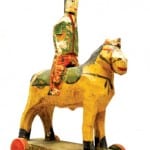
Old Sturbridge Village, one of the country’s oldest and largest living history museums, celebrates New England life in the 1830s and is open from 9:30 a.m. – 5:00 p.m. seven days a week. Admission: adults $24; seniors $22; children 3-17, $8; children 2 and under, free. All programs are subject to change. Each admission includes free parking and a free second-day visit within 10 days. Woo Card subscribers get $5 off adult daytime admission; college Woo cardholders receive $12 off adult daytime admission. For times and details of all OSV activities
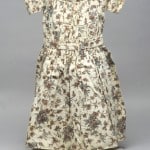
visit: www.osv.org or call 1-800-SEE-1830.
Did you know?
• Throughout much of the 19th century, infant boys and girls were dressed very much alike in gowns. This allowed the same garment to be passed from one sibling to the next without concern for
gender. It was also much more practical to manage diaper or nappy changes without having to undo an inordinate amount of trouser buttons.
• There was not much distinction between “girl” and “boy” colors and patterns, like there is in the 21st century. Blue was sometimes considered a soothing color for girls’ garments, while pinks were sometimes seen as a softer shade of red suitable for young boys.
• Boys were once breeched, or allowed to wear trousers for the first time, when they were old enough and dexterous enough to manage their own trouser buttons. This was often between 3 or 4 years old, though as late as 7 or 8 later in the 19th century.
• White was a practical color for many baby items; it could be washed by simply boiling and bleached with ease.
• Rattles were among the first toys an infant might receive; the rattling sound was considered
stimulating for an infant’s senses. Silver rattles sometimes had a piece of coral, which was used as a teether.
• For babies, the 1830s version of rubber pants were knitted wool “pilchers” that fit over the diaper and were also called “savers” or “soaker keepers.”



